[/caption]
The robotic arm on NASA’s Phoenix Mars Lander slid a rock out of the way during the mission’s 117th Martian day (Sept. 22, 2008) in order to take a look at the soil underneath the rock, and to see at what depth the subsurface ice was under the rock. The lander’s Surface Stereo Imager took this image later the same day, showing the rock, called “Headless,” after the arm pushed it about 40 centimeters (16 inches) from its previous location. “The rock ended up exactly where we intended it to,” said Matt Robinson of NASA’s Jet Propulsion Laboratory, robotic arm flight software lead for the Phoenix team. And what was underneath the rock? Take a look:
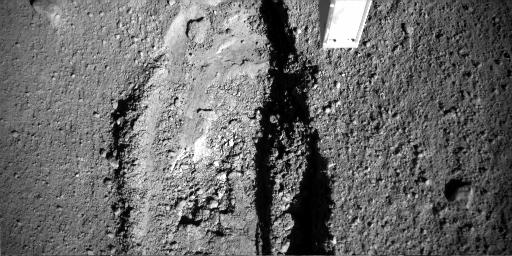
It’s hard to tell, exactly since the ground was disturbed from the moving. Some white material appears to be where the rock used to sit, but the Phoenix science team will have to study the area more closely. Look for official word from the team soon. It looks from this second image as though the thermal and conductivity probe was stuck in the ground a few times around the rock, searching for clues of any water molecules in the soil (look for the two separate marks left by the probe just to the right of the trench.)
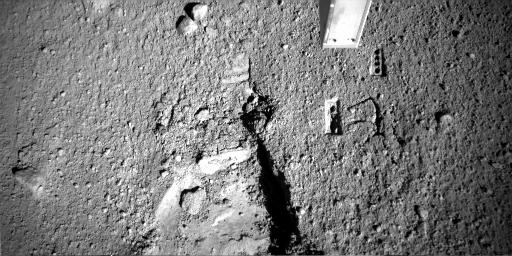
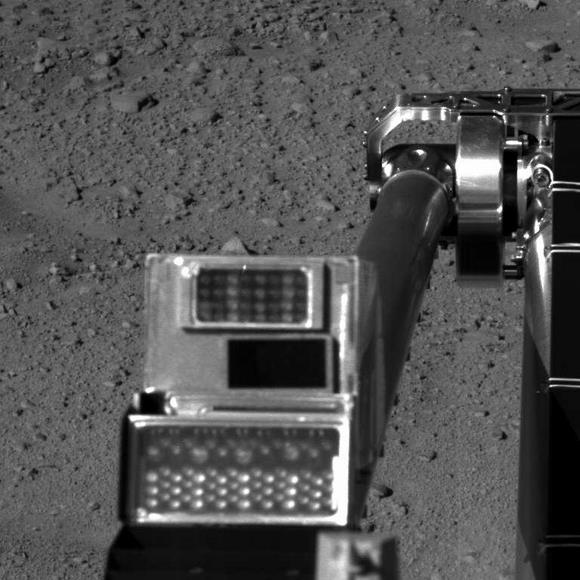
Also in recent days, the two Phoenix cameras took portraits of each other. Above is the Robotic Arm Camera (RAC) and below is the the Surface Stereo Imager:
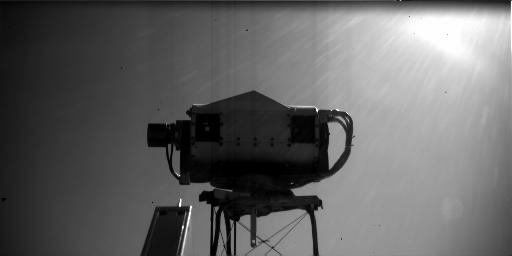
Source: Phoenix Gallery

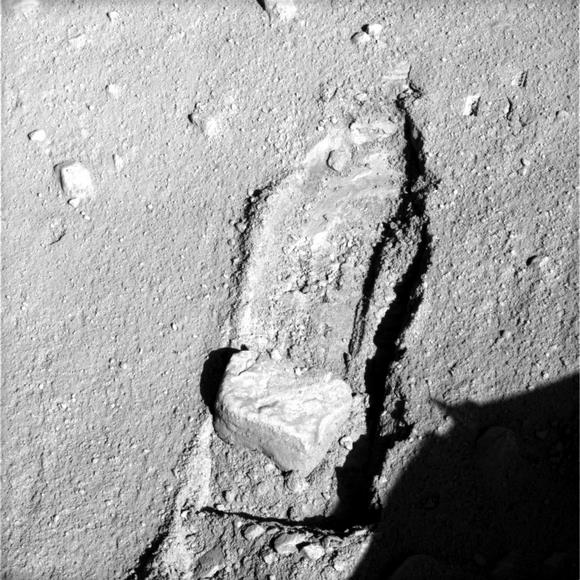
That last picture looks like the Tripods from War of the Worlds.
Creepycool.
yeah, a little bit
This really gives me some perspective. As a species, we’re relegated to turning over stones on other worlds to see what’s under them. That’s kind of sad, but you’ve gotta start somewhere right?
Jon, we still turn over stones in this world to see what’s under them. Just ask any field entomologist. 😉
What part of ‘turning over stones *ON OTHER WORLDS*’ isn’t impressive and exciting?
You have all missed the pint. They didn’t turn over the stone, they pushed it out of the way. They even admit they can’t tell exactly what was there because they disturbed the ground under the rock. Why didn’t they just turn/flip the stone over so there would be less disturbance underneath. Did they even try?
In the next few years i expect that we will have much more advanced robots to do this exploring. this one is doing exactly what it was meant for. If we really wnat to start exploring it will take a fleet of them.
I believe that life would most likely be found in crevices, ravines that are protected from most sunlight, or even in caverns below the surface. Since there is ice so near the surface in the northern lattitudes i would expect to find liquid water pockets in places around the planet. It would depend on the underground topography. We dont have the tech for thouroughly exploring in those places on our own planet let alone on another.
Joe, he said, licking the foam out of his moustache…I didn’t miss the pint!
I work for the largest ocean,air,and land geo survey company in this here world.Yes,we have the tech.The technology used in the oil and gas industry surpass NASA 10 fold.If the same time,money,and energy were spent in space exploration as the oil exploration we would probably be colonizing mars by now.
Dozer One Out